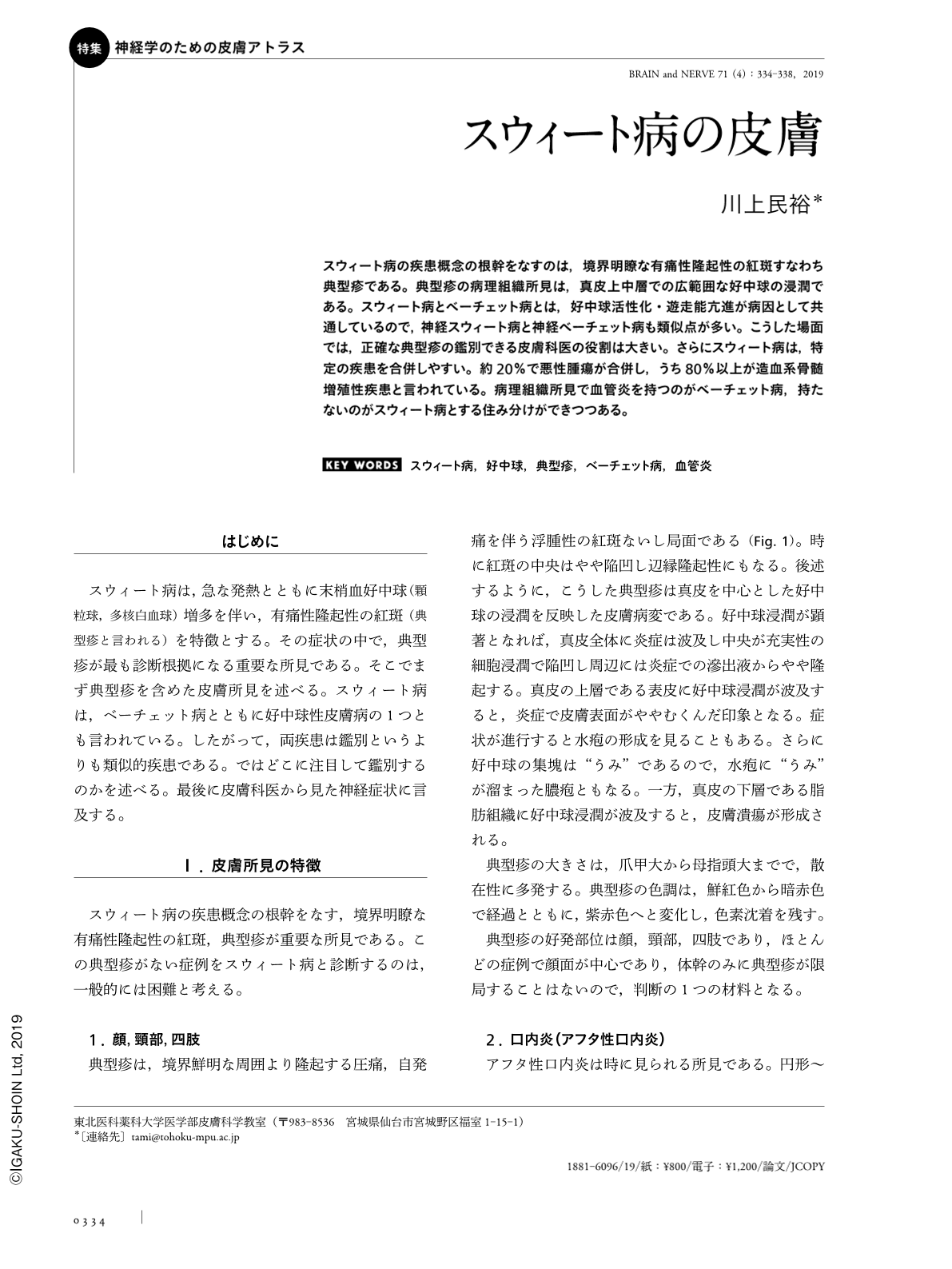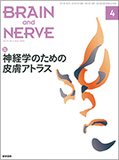Japanese
English
- 有料閲覧
- Abstract 文献概要
- 1ページ目 Look Inside
- 参考文献 Reference
スウィート病の疾患概念の根幹をなすのは,境界明瞭な有痛性隆起性の紅斑すなわち典型疹である。典型疹の病理組織所見は,真皮上中層での広範囲な好中球の浸潤である。スウィート病とベーチェット病とは,好中球活性化・遊走能亢進が病因として共通しているので,神経スウィート病と神経ベーチェット病も類似点が多い。こうした場面では,正確な典型疹の鑑別できる皮膚科医の役割は大きい。さらにスウィート病は,特定の疾患を合併しやすい。約20%で悪性腫瘍が合併し,うち80%以上が造血系骨髄増殖性疾患と言われている。病理組織所見で血管炎を持つのがベーチェット病,持たないのがスウィート病とする住み分けができつつある。
Abstract
Sweet disease, also known as acute febrile neutrophilic dermatosis, is a multisystem inflammatory disorder characterized by painful erythematous plaques and aseptic neutrophilic infiltration of various organs. It is also characterized by fever, polymorphonuclear leukocytosis, and painful erythematous cutaneous plaques. Cutaneous manifestations of Sweet disease are typically painful plaque-forming erythematous papules. Skin biopsies typically demonstrate dermal infiltration with neutrophils in the absence of vasculitis. Sweet disease is often associated with a hematological malignancy, especially acute myeloid leukemia or myeloid dysplasia syndrome. Sweet disease has clinical and laboratory features similar to those of Behçet's disease. Overlap exists between the clinical manifestations of Sweet disease and Behçet's disease. The neuro-Sweet disease is similar to the neuro-Behçet's disease. This article presents information on the pathogenesis, clinical approach, treatment, and expected evolution of these manifestations including the defference between neuro-Sweet disease and neuro-Behçet's disease. The possible role in this interesting association of Behçet's disease and Sweet disease is discussed and a review of the literature is presented.

Copyright © 2019, Igaku-Shoin Ltd. All rights reserved.


